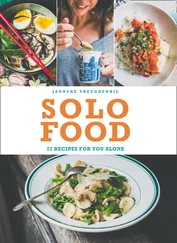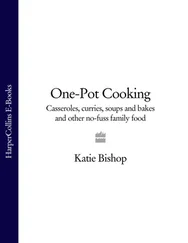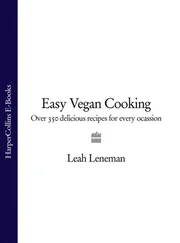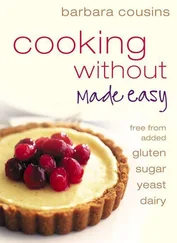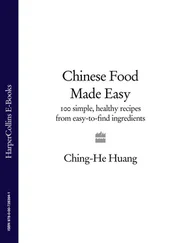This couldn’t be easier – on or off, high or low. In terms of actually using the machine it is very simple.
Some models have a medium setting, which heats up to the cooker’s highest temperature and then automatically switches to low for the remainder of the cooking time. Others have a warming function to keep food ticking over at perfect eating temperature after cooking has finished, but that’s about as complex as the controls get!
There are a surprisingly large number of slow cookers available, which vary in size, shape, capacity and price. Prices are surprisingly low in the majority of cases, although as with most things, there is a product to appeal to every consumer and every pocket. As with any kitchen appliance or oven, each brand varies in terms of its heating speed and how evenly it cooks and, as with any oven or appliance, there is an element of getting used to your own model.
Most major brands have a removable inner dish, although some fixed models are available. For flexibility, the removable models are far superior, especially ones that can be used on the hob to sauté – they create less washing up if meat and foods are seared before cooking, and most importantly they retain all the flavours and caramelised loveliness created by sautéing and searing.
Try to buy a model that’s suitable for heating in the oven or under a grill – this will give you increased options in terms of finishing dishes to give them colour after cooking. A machine with an in-built digital timer is also a real advantage in terms of ease and convenience and is definitely worth paying a little extra for.
All recipes in this book have been tested in a 5.7 litre (10 pint) family sized cooker. The capacity of your cooker really depends on who and how many you are cooking for, and whether you want to cook large joints of meat, for example, or cakes and puddings. The former are suited to large oval cookers, while a pudding basin or cake tin will need some depth to contain it. A large 5–6 litre (9–10 1/ 2pint) cooker is a good all-rounder for this, but it’s worth considering its size, especially when it comes to storage. If you are in doubt then go for a larger model than you think you might need as this will serve you well for freezer cooking and entertaining and be more adaptable than one that’s simply too small. As a general guide, 1.5–2.5 litre (3–4 pint) cookers are perfect for one and two people, while 2.5 litres (4 pints) will cater for about four. Upwards of 3.5 litres (6 pints) in capacity is perfect for five to six people, entertaining and cooking large batches of food for the freezer.
All slow cookers can be filled to within 2–3cm ( 3/ 4–1 1/ 4in) of the brim, and there is absolutely nothing to worry about when leaving your slow cooker on all day or night without supervision. If you have any worries check your manufacturer’s instructions for guidelines on operation times, particularly in terms of the warming function.
There is no doubt that a slow cooker will save you time and effort in the kitchen. However, to reap the benefits some preparation is required to ensure that you have the right ingredients ready to go before leaving the cooker to do its stuff. Most of this preparation starts with your choice of ingredients.
Choosing suitable ingredients
We have already discussed the increased use of slow-cooked, old-fashioned cuts of meat(see page 8). Some cuts (usually forequarter cuts from the front of the animal, or those parts of the animal that have had to work hard, such as legs and necks) are higher in fat and are naturally tougher through more rigorous or regular use. Slow moist cooking enables the protein in these muscles to break down, and produce gelatine, which makes the meat more tender and succulent. A fillet or breast with significantly less fat content may naturally be more tender, as it has done very little while the animal was alive, but will dry out more quickly during slow cooking and have less flavour and an unappealing, dry texture. If using higher fat meat concerns you, then rest assured that in the writing of this book, slow cooking has in the main proved to be a lower fat option to conventional cooking, as searing and frying of ingredients have often been unnecessary. Most meats look and taste better if ‘sealed’ or browned prior to cooking. However, the notion that meat must be browned to ‘seal’ in the meat juices during cooking and keep it moist is a myth. At 60°C (140°F) meat fibres begin to shrink and release their juice, whether ‘sealed’ or not. So, unless it is absolutely necessary for taste or appearance, the meat in this book is used directly to save time.
Fruit and vegetablesvary too, some being rather more resilient to long slow cooking than others, despite the more delicate temperatures of the slow cooker. As you would expect, root vegetables will take longer cooking than soft, delicate vegetables like cauliflower and broccoli, although you may be pleasantly surprised by vegetables cooked with their skins on, such as aubergines and courgettes, which one may otherwise expect to disintegrate with lengthy cooking. Unless otherwise stated, place vegetables in the slow cooker dish first then top with the meat, if using, as this will ensure that the vegetables cook evenly and absorb all the tasty meaty juices. Fruit follows a similarly logical path, soft fruit breaking down significantly faster than stone fruit or apples and pears, for example, and fruit in skins holding up remarkably well.
Cut potatoeswill turn black (oxidise) when in contact with the air, as will cut apples, pears and bananas. These must either be completely immersed in liquid during cooking or coated in lemon juice to prevent this ‘oxidisation’ from happening.
Dairy and sugardo not like very lengthy slow cooking (upwards of 6 hours) as they become denatured, especially when they are in concentrated form in cakes and desserts. Both seem to caramelise unpleasantly and start to break down. However, a few hours are fine, and if well diluted, in water, for example, there are few issues. If in doubt, stir dairy products in at the end of cooking to finish a dish, rather than cook with them for the duration.
Pastacan be cooked in the slow cooker but will become unpleasantly soft if cooked for too long. Try adding pasta to slow-cooked sauces about 30 minutes before the end of cooking. Lasagne and cannelloni are, however, more successful in the slow cooker (see Red Pepper, Basil and Ricotta Cannelloni on page 56).
Ricewill absorb lots of excess moisture produced during slow cooking and therefore lots of flavour too. Add about 30–50 minutes before the end of cooking and stir a couple of times to ensure that it cooks evenly.
Dried beansstill need to be soaked overnight before being cooked in the slow cooker. Dried red kidney beans must also be boiled for at least 10 minutes before draining and cooking to remove their dangerous toxins. Lentils, split peas and drained, tinned beans can be used directly.
Frozen ingredientsmust be defrosted before use in the slow cooker, otherwise they are unlikely to reach a safe cooking temperature, making them food poisoning time bombs!
The cooking liquidis an important part of success in slow cooking. As water is not lost in slow cooking in the way it is during extended stove-top simmering, the amount of water used to cook foods is normally reduced by about a quarter. Evaporation is reduced in the slow cooker as all the steam is retained in the pot; however, there is still some evaporation as the moisture/steam hits the hot sides of the cooking dish – this again will vary from one machine to another so keep an eye out when you are getting to know your cooker. Use water, stocks, wine, beer, cider, fruit juice or similar to cook in and add flavour. Bear in mind that when cooking with wine or vinegar the lack of evaporation means that the acidity and alcohol doesn’t cook off in the same way as stove-top cooking, so the flavour usually remains very pungent and undeveloped.
Читать дальше





